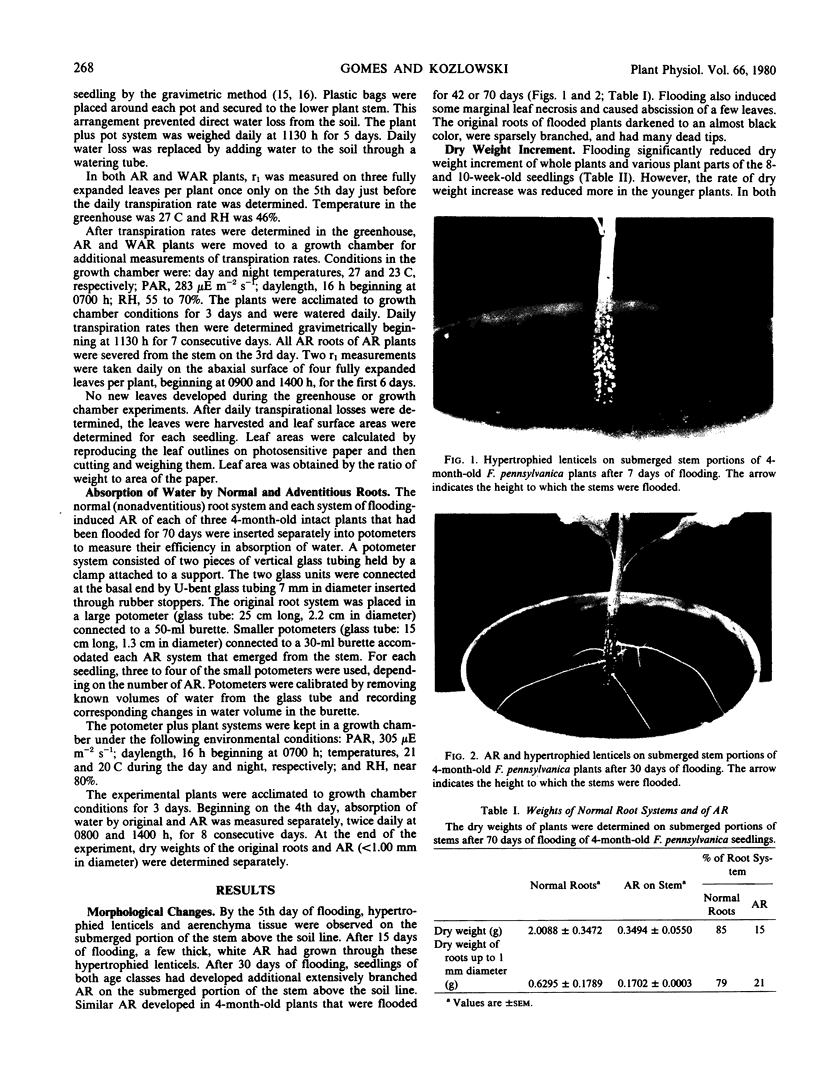Abstract
Flooding induced several physiological and morphological changes in Fraxinus pennsylvanica seedlings, with stomatal closure among the earliest responses. Subsequent changes included: reduction in dry weight increment of roots, stems, and leaves; formation of hypertrophied lenticels and production of adventitious roots on submerged portions of the stem above the soil line; leaf necrosis; and leaf abscission. After 15 days of stomatal closure as a result of flooding, stomata began to reopen progressively until stomatal aperture was similar in flooded and unflooded plants. Adventitious roots began to form at about the time stomatal reopening began. As more adventitious roots formed, elongated, and branched, the stomata opened further. The formation of adventitious roots was an important adaptation for flooding tolerance as shown by the high efficiency of adventitious roots in absorption of water and in high correlation between the production of adventitious roots and stomatal reopening.
Full text
PDF




Images in this article
Selected References
These references are in PubMed. This may not be the complete list of references from this article.
- Kanemasu E. T., Thurtell G. W., Tanner C. B. Design calibration and field use of a stomatal diffusion porometer. Plant Physiol. 1969 Jun;44(6):881–885. doi: 10.1104/pp.44.6.881. [DOI] [PMC free article] [PubMed] [Google Scholar]
- Kramer P. J. CAUSES OF INJURY TO PLANTS RESULTING FROM FLOODING OF THE SOIL. Plant Physiol. 1951 Oct;26(4):722–736. doi: 10.1104/pp.26.4.722. [DOI] [PMC free article] [PubMed] [Google Scholar]




